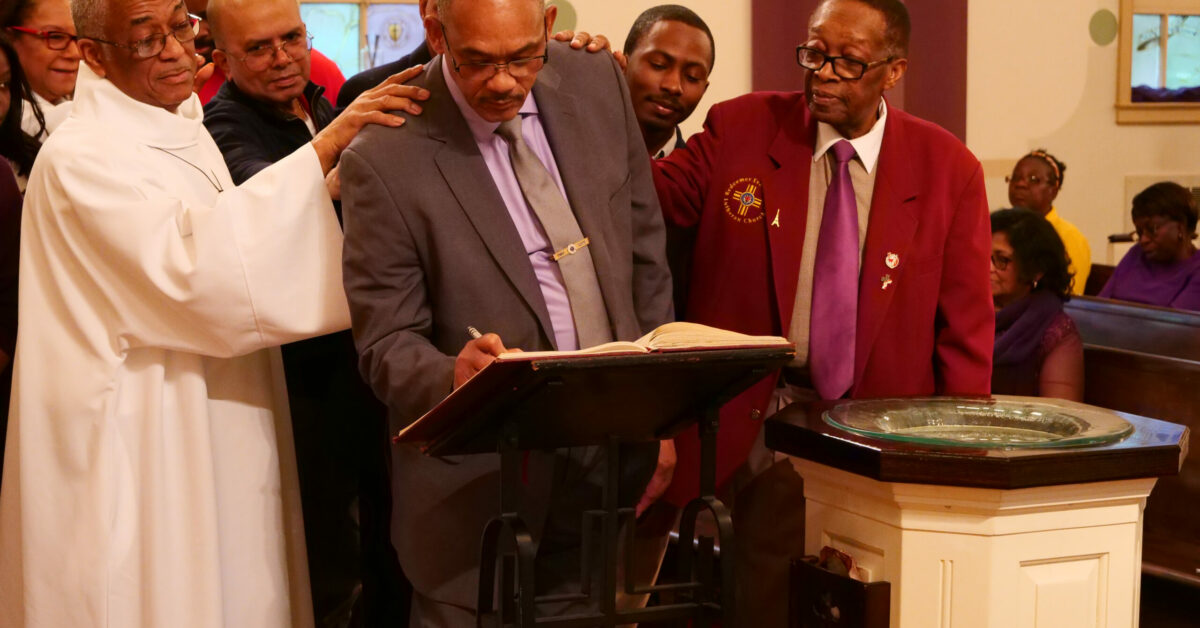Rituals for Christian Life
Last week, Rhoda reflected on the Rite of Baptismal Thanksgiving that participants at our two workshops experienced. In addition, we celebrated two rites that punctuate the catechumenate at points of transition: the Rite of Welcome/Acceptance and the Rite of Election/Enrollment. We also participated in a prayer experience during the Period of Inquiry. We experienced these rites, then allowed time for individual reflection, one-on-one reflection, and entire workshop reflection. Questions we asked to facilitate reflection included: What was most compelling? What surprised you? What might make sense and be helpful in your congregation? How does the rite express Lutheran theological convictions? Participants received these experiences as genuine moments of worship of the Triune God and as revelatory experiences for how the rites of the catechumenate might be received into their congregations.
We participated in the Rite of Welcome/Acceptance and the Rite of Election/Enrollment as they are enacted at Redeemer Evangelical Lutheran Church in the Bronx, New York under the leadership of Pastor Dien Ashley Taylor and Deaconess Raquel Rojas. The Rite of Welcome/Acceptance transitions the inquirer into the catechumenate proper, the period of more intentional study of God’s Word and of the possibilities for life within the church. It includes the anointing of various parts of the body in accord with how the entire body is being conformed to Jesus Christ. We anointed the forehead, lips, eyes, ears, shoulders, heart, hands, and feet of participants while others served as sponsors. Reflections noted how intimate the experience is and wondered how that might be received by some. Yet, the association of the action with the Word of God and the way in which it was done (without ostentation or creating the opportunity for embarrassment) allowed all to participate in very meaningful ways.
The Rite of Election/Enrollment which transitions the catechumen into the focused period of preparation for baptism during Lent includes the elect’s announcement of being affirmed by the Christian community for participation in the church and the elects’ writing of their names in the Book of the Elect. Much to my surprise, this rite was even more unsettling to participants than the Rite of Welcome. Potential associations of the Book of the Elect with the Book of Life troubled some of the participants, but when the signing was explained as recording the name of the Elect in the congregation’s family “photo” album that helped to blunt some of the reticence of those potential associations. All agreed that the association of the sponsors with the elect (through the laying on of hands on their shoulders) and the congregations’ support also shown through the extension of hands as an act of prayer and blessing was a powerful expression of the Spirit’s work through fellowship in the Body of Christ.
Finally, the prayer experience during the Period of Inquiry allowed participants to reflect on the patterns of their prayer life, adopt the position of a sponsor, and attempt to teach and form a partner acting as an inquirer how to pray. All agreed that this was an eye-opening experience. Many had never been asked to reflect on their prayer life in this way and had never been asked to teach prayer to someone new to the Christian faith. They were able to put themselves into the experience of being an inquirer who is new to praying to the Father through his Son Jesus Christ by the power of the Spirit.
All of these experiences provided a worshipful context for the catechumenate and a potential vision for how these rites and experiences might be useful in forming new Christians toward a life of faith in hope in Jesus Christ.
